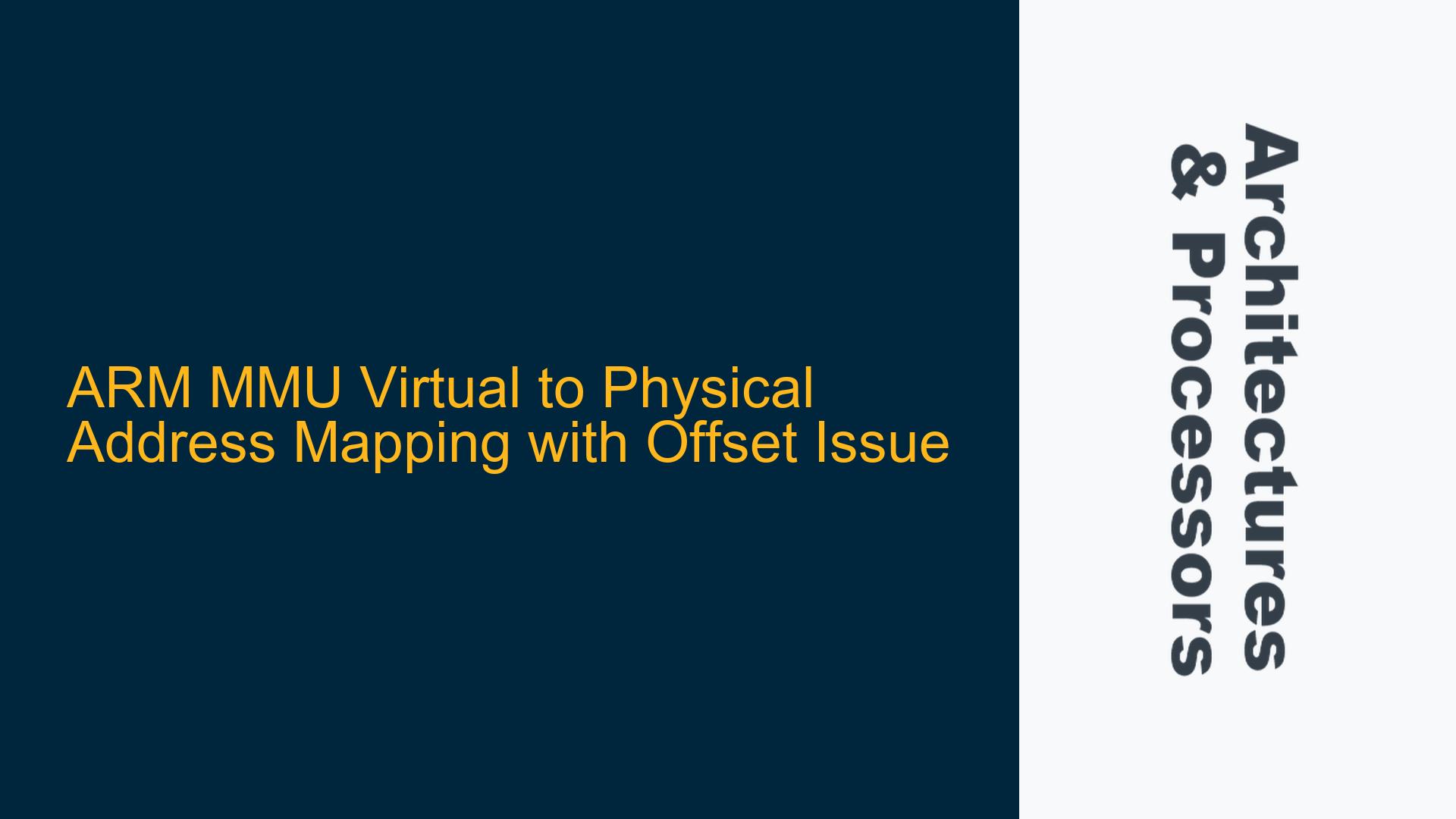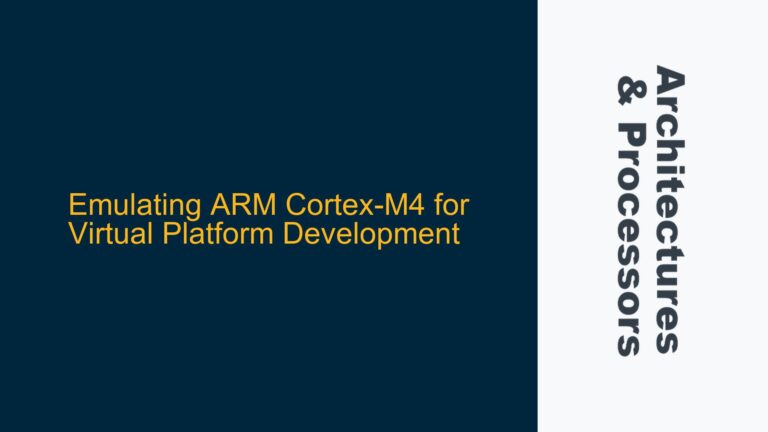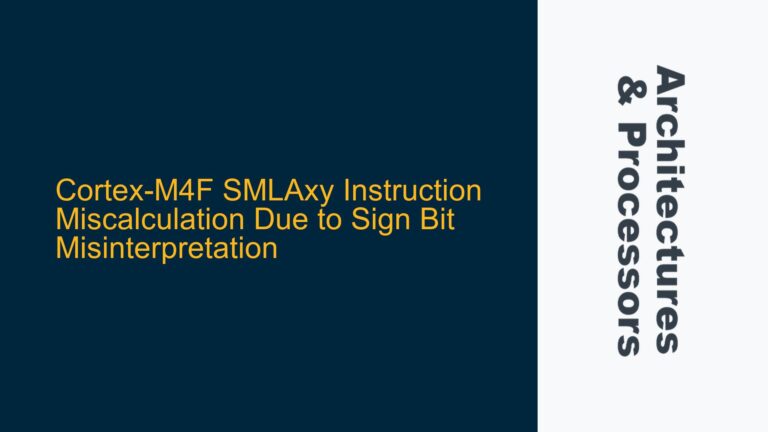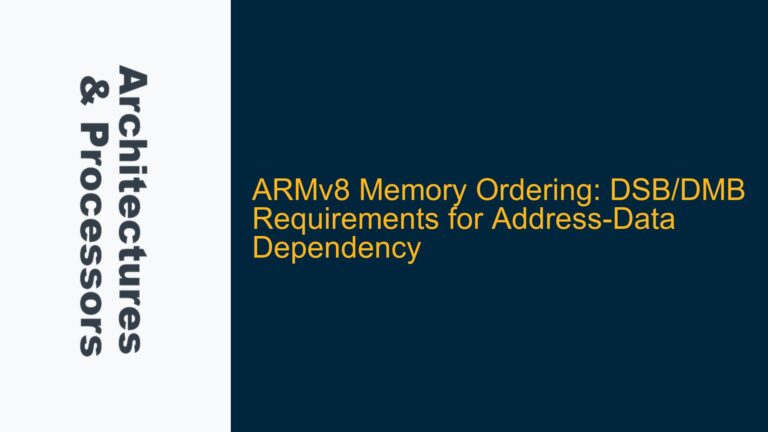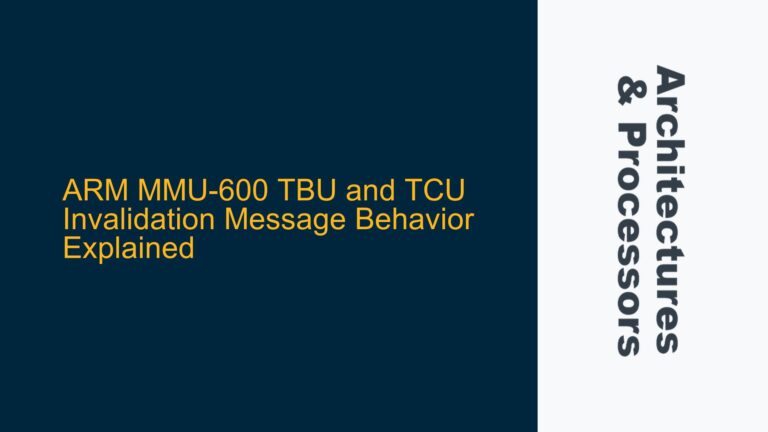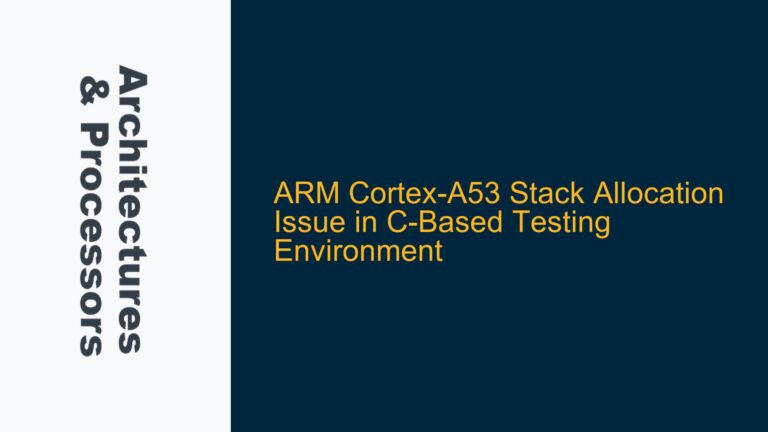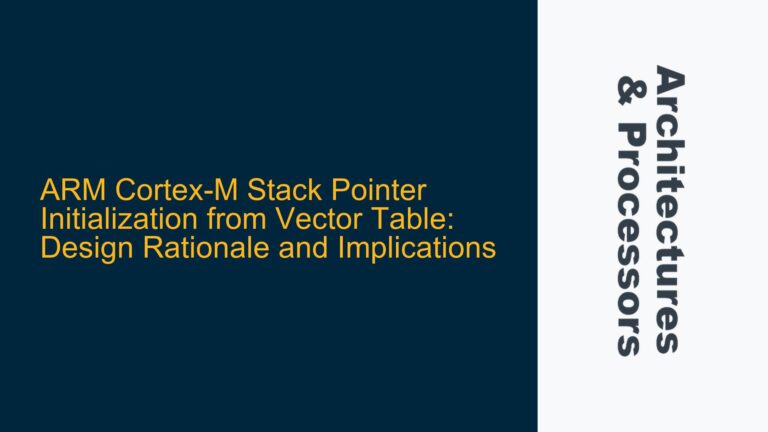ARM Cortex-A53 MMU Section Mapping with Non-Identity Offset
The core issue revolves around configuring the ARM Cortex-A53 Memory Management Unit (MMU) to map a virtual address range to a physical address range with a non-identity offset. Specifically, the goal is to map the virtual address range 0xFFFF000000000000 to 0xFFFF000040000000 to the physical address range 0x40000000 to 0x80000000. This requires a detailed understanding of the ARMv8-A architecture’s MMU, translation table configuration, and the nuances of section mapping.
In ARMv8-A, the MMU uses a multi-level translation table mechanism to map virtual addresses to physical addresses. The Translation Table Base Register (TTBR) points to the base of the translation table, and the Translation Control Register (TCR) configures the size and granularity of the address spaces. The issue arises when attempting to map a virtual address range to a physical address range that is not a direct 1:1 mapping (identity mapping). The user is attempting to use section entries in the translation table to achieve this but is encountering issues where the mapping does not behave as expected.
The problem is further complicated by the need to ensure that the translation table entries are correctly configured with the appropriate attributes, such as access permissions, memory type, and block descriptors. Additionally, the TCR must be configured to match the address space sizes and granularity of the translation tables. Misconfiguration of any of these components can lead to incorrect address translation, resulting in memory access faults or unexpected behavior.
Misconfigured Translation Table Entries and TCR Settings
The primary cause of the issue lies in the misconfiguration of the translation table entries and the TCR settings. In ARMv8-A, the translation table entries must accurately reflect the physical address range being mapped, along with the appropriate attributes. The user’s attempt to map the virtual address range 0xFFFF000000000000 to 0xFFFF000040000000 to the physical address range 0x40000000 to 0x80000000 requires careful configuration of the translation table entries.
The translation table entries must specify the base physical address of the section being mapped, along with the appropriate attributes such as access permissions, memory type, and block descriptors. If the base physical address is not correctly specified, the MMU will not be able to correctly translate the virtual addresses to the desired physical addresses. Additionally, the TCR must be configured to match the address space sizes and granularity of the translation tables. The TCR settings control the size of the virtual address space, the granularity of the translation tables, and the attributes of the memory regions.
In the user’s case, the TCR is configured with t0sz = 16 and t1sz = 16, which sets the size of the virtual address space for both TTBR0 and TTBR1 to 48 bits. The tg1 = 2 setting configures the granularity of the translation tables for TTBR1 to 4KB. However, the user’s translation table entries may not be correctly configured to reflect the desired physical address range, leading to incorrect address translation.
Another potential cause is the misconfiguration of the TTBR registers. The TTBR registers must point to the base of the translation tables, and the translation tables must be correctly populated with the appropriate entries. If the TTBR registers are not correctly configured, the MMU will not be able to locate the translation tables, leading to incorrect address translation.
Correctly Configuring Translation Table Entries and TCR for Non-Identity Mapping
To resolve the issue, the translation table entries and TCR must be correctly configured to achieve the desired non-identity mapping. The following steps outline the process for correctly configuring the translation table entries and TCR:
-
Configure the Translation Table Entries:
The translation table entries must be configured to map the virtual address range0xFFFF000000000000to0xFFFF000040000000to the physical address range0x40000000to0x80000000. Each entry in the translation table must specify the base physical address of the section being mapped, along with the appropriate attributes such as access permissions, memory type, and block descriptors.For example, to map the virtual address range
0xFFFF000000000000to0xFFFF000040000000to the physical address range0x40000000to0x80000000, the translation table entries must be configured as follows:Virtual Address Range Physical Address Range Translation Table Entry Configuration 0xFFFF000000000000 – 0xFFFF000040000000 0x40000000 – 0x80000000 Base Physical Address: 0x40000000, Attributes: Access Permissions: EL1 Read/Write, Memory Type: Normal Memory, Block Descriptor: Section -
Configure the TCR:
The TCR must be configured to match the address space sizes and granularity of the translation tables. Thet0szandt1szfields must be set to the appropriate values to reflect the size of the virtual address space, and thetg1field must be set to the appropriate value to reflect the granularity of the translation tables.For example, to configure the TCR for a 48-bit virtual address space with 4KB granularity, the TCR must be configured as follows:
TCR Field Value Description t0sz 16 Size of the virtual address space for TTBR0 (48 bits) t1sz 16 Size of the virtual address space for TTBR1 (48 bits) tg1 2 Granularity of the translation tables for TTBR1 (4KB) -
Configure the TTBR Registers:
The TTBR registers must be configured to point to the base of the translation tables. The TTBR0 register must point to the base of the translation table for the lower virtual address space, and the TTBR1 register must point to the base of the translation table for the upper virtual address space.For example, to configure the TTBR registers to point to the base of the translation tables, the TTBR0 and TTBR1 registers must be configured as follows:
TTBR Register Value Description TTBR0 0x40000000 Base of the translation table for the lower virtual address space TTBR1 0x80000000 Base of the translation table for the upper virtual address space -
Verify the Configuration:
After configuring the translation table entries, TCR, and TTBR registers, the configuration must be verified to ensure that the MMU correctly translates the virtual addresses to the desired physical addresses. This can be done by accessing the virtual address range and verifying that the correct physical address range is accessed.For example, to verify the configuration, the virtual address range
0xFFFF000000000000to0xFFFF000040000000can be accessed, and the physical address range0x40000000to0x80000000can be checked to ensure that the correct addresses are accessed.
By following these steps, the translation table entries and TCR can be correctly configured to achieve the desired non-identity mapping. This will ensure that the MMU correctly translates the virtual addresses to the desired physical addresses, allowing the system to function as intended.
In conclusion, the issue of mapping a virtual address range to a physical address range with a non-identity offset on an ARM Cortex-A53 processor can be resolved by correctly configuring the translation table entries, TCR, and TTBR registers. By carefully configuring these components, the MMU can be made to correctly translate the virtual addresses to the desired physical addresses, ensuring that the system functions as intended.
